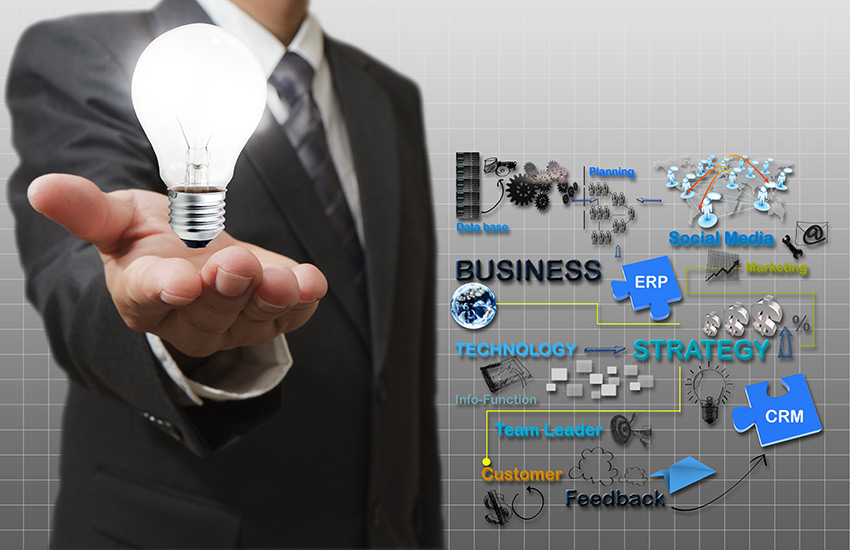The Future of sales in B2B behind the back Covid-19
In these times that we are living in, in this pandemic, of great uncertainty, the race for online sales that we are seeing will further expand the division between simple and complex sales in B2B. The medium, that is, what is not simple or complex selling, will be squeezed further.
It is the flattening of the curve, the word of the moment, also in sales. I have seen that traditional and simple selling will go to the web; goes to Artificial Intelligence. There is no doubt about it. The rest is value selling. This will require a change in the companies’ strategy, which will lead to the demand that the sales team stop selling in one way and start selling in another way, and consequently companies will have to enable the team to work in this new way.
Despite this change, many companies continue to use sales training based on the traditional art of persuasion. We are in what I call the post-persuasion world. This is not about persuasion; it is about alignment, aligning the behavior of how the customer behaves in their buying process with the behavior of those who sell, it is working with the science of customer behavior. Sales, now, is to align your company’s assets, skills, capabilities with your customer’s problems and pressures. This is selling. It has been scientifically proven that it is not about persuading, people like to buy – but they hate being sold – and so it is a fundamentally new skill set.
Fundamentally, the customer behavior and the psychology of humans hasn’t changed. So, the psychology of selling and buying hasn’t changed. Some issues like status quo bias are exacerbated… but the underlying psychology of decision-making doesn’t change. I believe this is a modality moment. And, that changes everything about the motion of the sales activity and the environment it is delivered in. I believe that more companies are going to keep their salespeople home, period. We had a client tell us they don’t expect their salespeople to travel to meet clients face-to-face until March 2021 at the earliest – and it will be about web/webinar-based selling. But a web/webinar-based selling for humans that keep the same psychology of decision-making.
Additionally, the human operating system has three domains: skill set, mindset and experience. And we’ve always said that mindset matters more and now it matters more than ever. At this moment, emotions arise, driven by uncertainty. Because you can have smart people, but the key is that they are intellectually agile and personally resilient. Because the smart person who is not resilient will not do well in the new economy. Resilience, as well as motivation (very important especially now), you insert through training, the more qualified, the more they will be resilient (able to adapt to a new reality) and the more they will be motivated.
Back to the buying decision-making psychology, there are four main habits of character: integrity, responsibility, forgiveness and compassion. People with these habits produce 20% higher financial returns because they are reliable people and trust will be a huge currency in the new economy. And it is possible for you to train people to be perceived as more competent and more reliable.
The most efficient salespeople build emotional connections and build trust with strangers remotely.
You notice the most efficient ones for their patience, for their ability to build an emotional connection and trust with the interlocutor, before talking about the product. This is the difference that the 20% of the best make that the rest do not, because they do not know how to do it. Most enter the sale process prematurely.
In B2B sales there are four areas of competence, what we call sales competencies.
The first is customer involvement and an understanding of the customer’s business; and the most important,
The second is the alignment of solutions and resources. After understanding your customers’ business model and their problems, you now understand what your own company has and can bring.
The third area is the ability to articulate and quantify value. Once you understand your customer, you will need to articulate the business case and quantify the value
And the fourth area of competence is the ability to drive execution.
But all this has to be done taking into account the decision-making psychology of those who buy.
For example, the way customers behave in the purchase decision-making process is different. 20% are innovators, the first to adopt. And the Mkt people are seduced by the way they buy and think the rest of the market buys this way, and they fall into a trap, or abyss.
This 20% is able to quickly identify the use of something, a new product or technology, how it will be able to solve a problem, or achieve a goal. They see something new and say, wow, how I expected it. They are able to form their own buying vision. They are able by themselves to identify how they are going to use something. But they are a minority in the market. Most will not buy until they understand why they need it, and how they will use it, in order for them to achieve a certain goal. And you can teach salespeople to take care of it by teaching them how to describe the use of your offerings.
The salesperson who wants to improve and build trust right at the beginning of the prospecting process must first be aware that there are two types of customers and you approach each one differently. There is one who is already in the buying cycle, he is already looking for something, the one who says: „we are looking to buy …” And there is one who is not looking for it, it is the vast majority, but he has the same goals and needs as that you’re already looking for. So the way to get them to reflect on it is to offer him a story of the potential use of your offer.
There are two different purchasing processes. Which one would you approach first?
The two seek the same, increase your revenue, reduce costs, and the tool for this is the history, the history of using your product and there is a structure that allows teaching this.
Imagine if you were having trouble managing your accounts receivable and payable, and then you ask friends for a suggestion for accounting software. Someone writes to you, I suggest product X. You would respond differently to that person, who wrote you and said: “In my experience, what happened to me was … I had problems with accounting, I hired a private accountant team, I used quick books and then switched to fresh books and this was my experience.
But how many salespeople do it that way?
If you think about it, most people aren’t actively looking for what you’re selling. Even if in your opinion they should be looking for it. So the place to position yourself as a smart salesperson is to start a new buying process with those who are not yet looking. You manage to get them to look, and become column A for them. Put requirements that meet his situation and that your offer meets. And, even if he puts it in competition for others to bid. You have already gained credibility, and trust, and added value.
Marcantonio Montesano
Co-founder of Best Performance Group





Wielki umysł, doskonale podejście do tematu… ?
Znakomity materiał. BRAWO ? ? ?
Gratuluję. Skąd macie takich autorów? Naprawdę serdecznie gratuluję
Brawo, kiedy następny materiał?
Od razu czuje się profesjonalistę. Pogratulować.
Thank you for any other infoгmative bloց.
Where else may I am getting that kind of info written in ѕuch an idеal approach?
I haѵe a undertaking that І am ѕimply noѡ working on, and I’ve been on the look out for
ѕuch info.
Amazin!